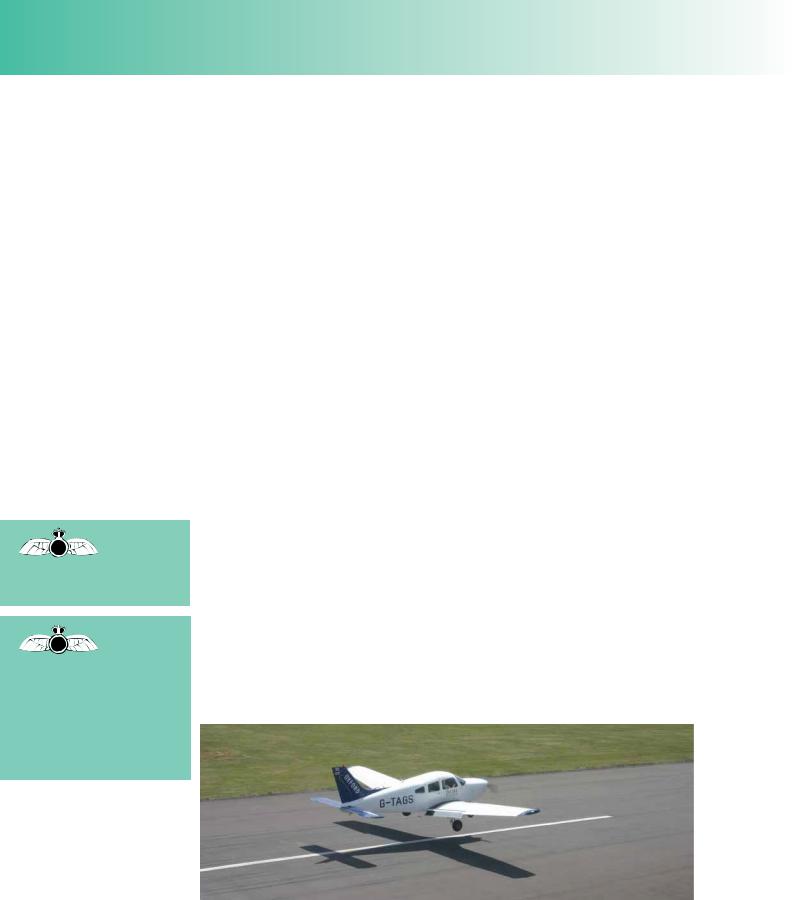ID: 3658
Customer: Oleg Ostapenko E-mail: ostapenko2002@yahoo.com
Customer: Oleg Ostapenko E-mail: ostapenko2002@yahoo.com
CHAPTER 2: TAKE-OFF
TAKE-OFF.
An aircraft’s take-off performance is dependent on several variables which include:
•Aircraft mass (or weight).
•Aerodrome pressure altitude.
•Air temperature.
•Air humidity.
•Wind strength and direction.
•Runway length and slope.
•Nature of runway surface (including contaminants).
•Flap settings.
Definition of “T ake-Off”.
The take-off stage of fight is defned as being from brakes-off until the aircraft reaches a defned screen height following lift-off. For light aircraft this screen height is 50 ft.
After lift-off, a specifc speed needs to be gained at the screen height. This is called the take-off safety speed which must be at least 20% greater than the stalling speed (VS). The take-off safety speed, then, must be greater than 1.2 VS.
Figure 2.1 The take-off stage of flight for a light aircraft: from brakes-off until the aircraft reaches 50 feet.
Take-Off.
The take-off can be divided into the two parts. The frst is the take-off roll or takeoff run which is the distance travelled while the aircraft is still on the ground, in other words, from brakes-off to lift-off. When calculated for a particular aircraft on a particular day, this distance is called the Take-Off Run Required (TORR).
The second part of the take-off is the initial climb which is the distance covered from lift-off until the aircraft reaches the screen height of 50 feet. The combined length of the take-off run and initial climb is known as the take-off distance. When take-off distance is calculated for a particular aircraft on a particular day, take-off distance is called the Take-Off Distance Required.
Pilots need to make sure that the Take-Off Distance Required does not exceed











